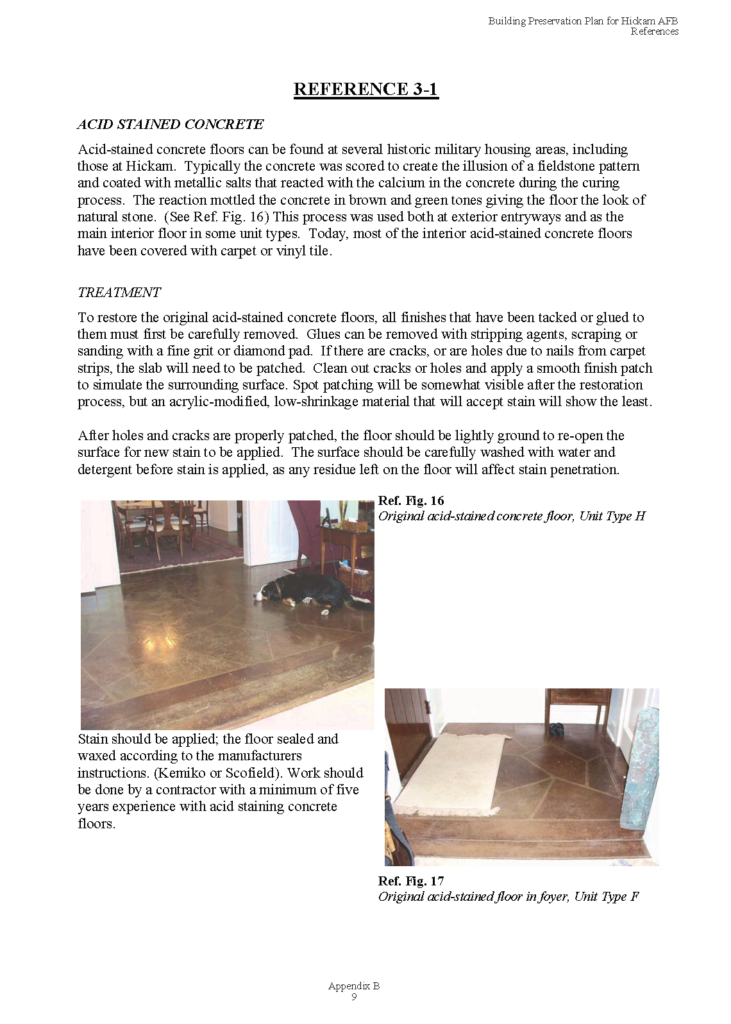What are maintenance plans and why do one?
By Virginia Murison, AIA
A Maintenance Manual or Plan identifies those character-defining features of a historic structure that convey its significance and provides guidance for the routine maintenance, as well as repair methods, that will preserve the feature, material or finish. Often, these will include historic materials or finish methods that are not common to contemporary buildings. This documentation is a valuable part of preservation literature for educational purposes as well as practical in-the-field guidance.
As a companion to a Historic Structure Report, a Programmatic Agreement or a Preservation Plan, a Maintenance Plan is a valuable component in the documentation of a historic property.
All Federal Agencies are required by the National Historic Preservation Act to identify the historic resources under their control and to protect those properties to the maximum extent possible.
Private sector owners, organizations and commercial management concerns are also custodians of significant historic structures which require sensitive and routine maintenance. Historic materials and finishes often exist which would be difficult to replicate or replace if they were lost, emphasizing the need for maintenance and care to prevent loss or damage.
Property owners applying for the City & County of Honolulu’s property tax exemption for historic commercial properties are required to develop and submit a 10-year maintenance plan as a condition for receiving the exemption. The maintenance plan helps ensure that the characteristics that convey the historic significance will be retained and the property maintained in good condition.
The Secretary of the Interior defines “preservation” as “identification, evaluation, recordation, documentation, curation, acquisition, protection, management, rehabilitation, restoration, stabilization, maintenance, research, interpretation, and conservation” (emphasis added)
A maintenance manual is intended to assist facility managers, planners, architects and maintenance supervisors in performing maintenance and repairs on historic structures. It survives the potential change in tenants and maintenance staffing to provide consistent guidance for the long-range maintenance of historic properties.
The scope and level of detail for a maintenance plan will vary with the complexity of the property, the level of finishes and the current condition.
A typical Table of Contents includes:
- Introduction to the Property: location, historic significance, description of character-defining features and priorities for treatment
- Orientation and overview of the Secretary of the Interior’s Standards for Preservation or Rehabilitation
- Assessment of Building Materials and Systems, and how the Standards apply to specific features of the subject property. This section may be organized by material, craftsmanship, location or feature.
- Considerations for Building Systems, including electrical, plumbing, and HVAC
- Other considerations that may apply, such as security, accessibility, sustainability or hazardous materials abatement
- Site and landscape treatments
- Timeline for regular and recurring actions, monitoring and documentation of interventions.
Typical Character Defining Features[1]

Example of Maintenance Guidance[2]

Sources:
[1] Group 70 International, Inc. and Mason Architects, Inc., “Wooden Structures Repair Manual for Historic Facilities” For Commander, Navy Region Hawai‘i, September 2011.
[2] Mason Architects, “Hickam AFB Preservation Plan Appendix A – Building Preservation Plan of Selected Historic Homes”, 2006.

